Talking About Healthy Relationships with 2SLGBTQ+ Youth
Video Vignettes & Discussion Guide
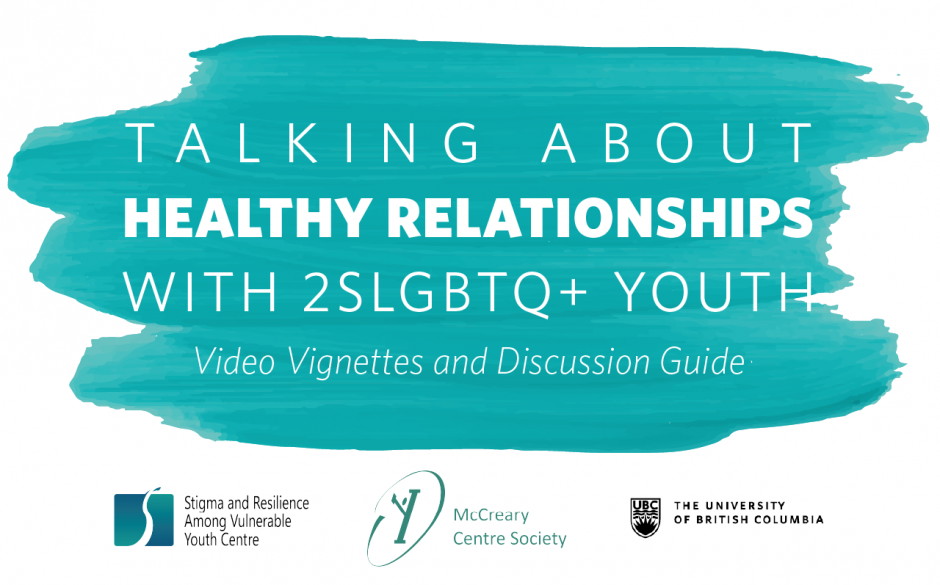
About This Resource
Taking Pride is a healthy relationships curriculum for 2SLGBTQ+ youth developed by the Stigma and Resilience Among Vulnerable Youth Centre (SARAVYC) at the University of British Columbia in collaboration with the McCreary Centre Society. The project was funded by the Public Health Agency of Canada.
As part of this curriculum, we scripted and commissioned six video vignettes which portray a number of scenarios 2SLGBTQ+ youth may encounter in relationships. This teaching manual resource is intended to accompany these videos as a stand-alone discussion guide; it is not the full training manual for the Taking Pride curriculum. Rather, we are publishing these discussion guides with the video vignettes so that other educators can incorporate these scenarios into their own trainings, workshops, and discussions.
The videos focus on 2SLGBTQ+ relationships, however, the scenarios are broadly applicable to youth of diverse identities and could be used for a similarly broad age range of 14 to 25.

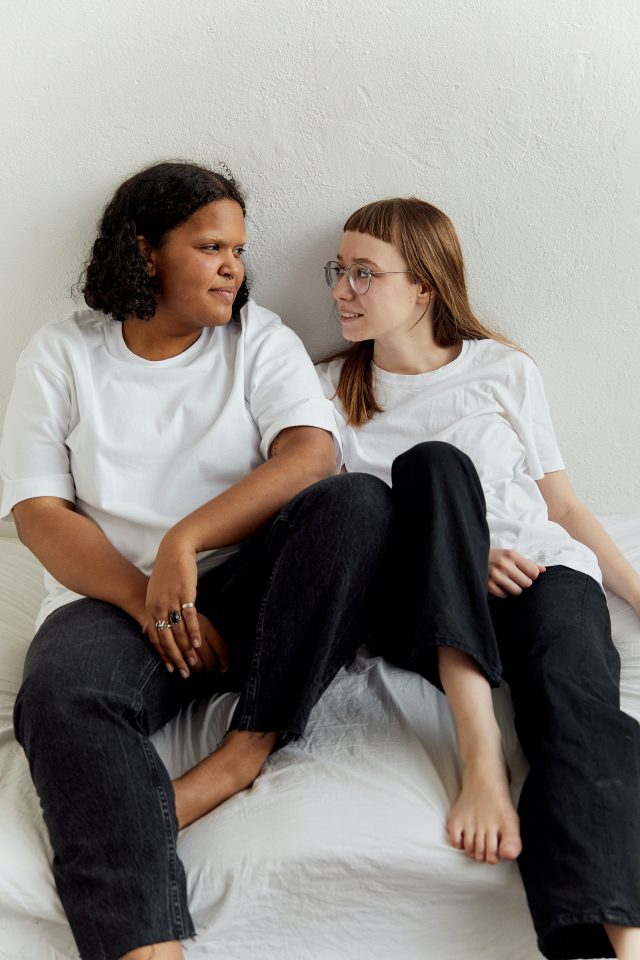

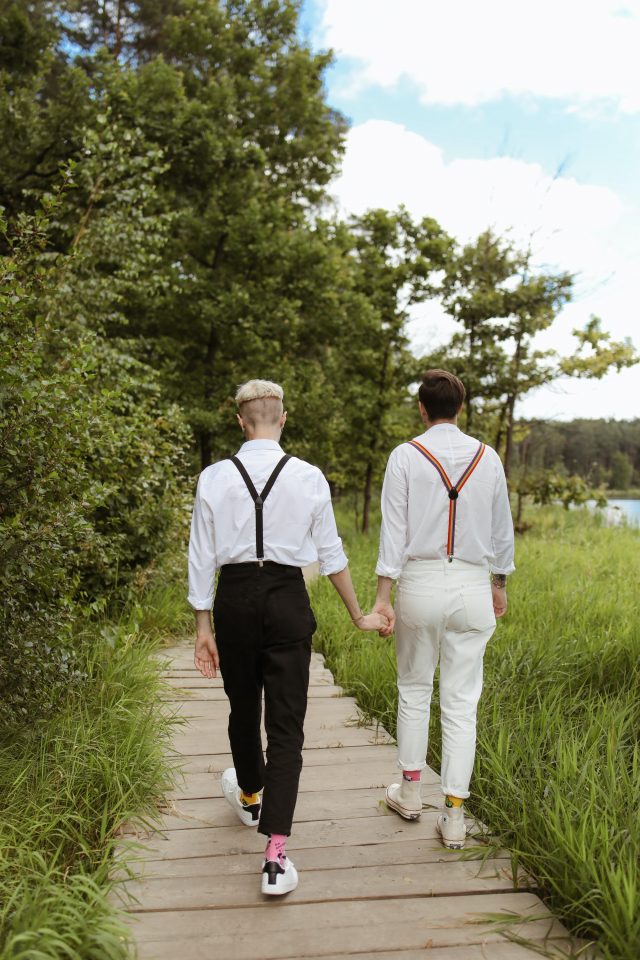

What’s Included:
For each vignette discussion you will find a description of the video, suggestions for use, topics covered, and keywords associated with the video. Trigger warnings will be listed before each video introduction. This is to help you see which videos will be of use to you depending on your current training and facilitation needs.
You will also find access-minded descriptions and transcripts of each video to prioritize accessibility. These transcripts and descriptions can be used to increase comprehension and ensure access for those with visual, aural, cognitive, or other disabilities.


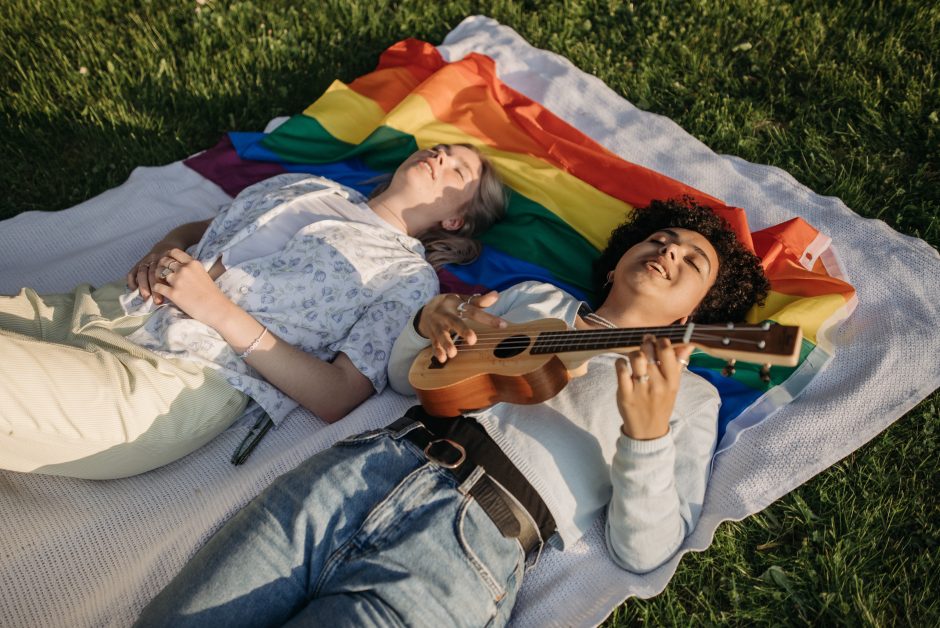
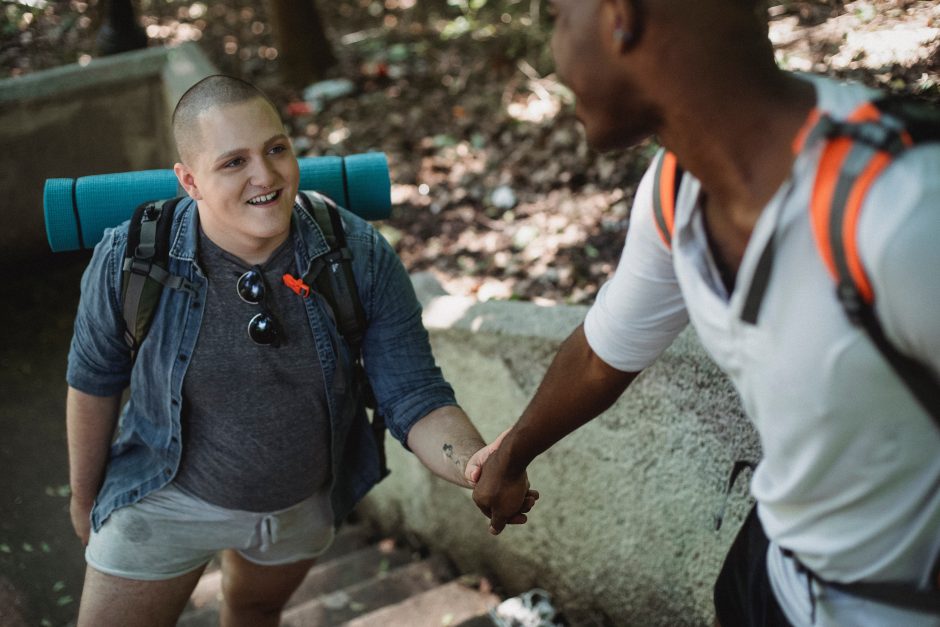
Video 1: Boundaries
Run time: 1:53
Pause for discussion: 1:10
Trigger warnings: Forced outing, romantic relationship conflict, food
Vignette
The following video features a dating scenario that can help model giving and asking for consent in everyday moments. Our couple, Janine (left) and Erika (right), represents two young femme-presenting people navigating social media, family, and public identity. Erika takes a selfie as Janine kisses her cheek, an intimate, happy moment. Then, while Janine returns to their previous conversation on the boba tea they both have, Erika posts the photograph to social media. Unfortunately, as we discover, Janine is not out to her parents, and her aunt sees the photograph, calling Janine immediately to discuss it.

Discussion
The video pauses here, allowing for further discussion of the scenario where you may ask questions like:
- What went wrong?
- What could Erika have done differently?
- What kind of consent did she need here?
It could be worthwhile to ask participants to model how they would ask for this kind of consent or to describe how they themselves would give consent if they were Janine.
- How would they like to be asked for consent?
- What would their communication needs be here?
You may also want to be prepared if the discussion moves to questions of how Erika and Janine might resolve this.
- What does apology look like here?
- What is a healthy, constructive way of addressing the harm and complications Erika’s actions have created for Janine?
A Different Ending
After discussion, you can resume the video to watch as a different ending plays out between Janine and Erika. Here, Erika still takes the selfie, documenting the happy moment together, but instead pauses to ask Janine if posting the photo is okay. Janine responds by reminding Erika she hasn’t had “that conversation” with her parents yet (i.e. her parents do not know she is queer), and Erika tucks her phone away, affirming Janine and continuing their time together playfully, diffusing any lingering tension with laughter and affection.
This can then prompt questions of other scenarios that require consent, practicing asking for and giving consent as Janine and Erika model or navigating social media safety in relationships that protect partners. While the video focuses on consent, broader topics of social media safety, “coming out,” and comfort levels with public affection may also be important conversations this video can supplement.
Topics Covered:
Consent (including outside of sexual intimacy), youth and social media, coming out, public identity, family and sexual identity, romance, emotional intimacy, public relationships
Keywords:
Instagram, social media, consent, relationships, family, coming out
Video 2: Rejection & Communication Styles
Run time: 2:20
Pause for discussion: 1:28
Trigger warnings: Biphobia, microaggressions against queer characters
Vignette
In this video, we meet Greg and Julie as Greg helps Julie move into a new apartment. As they finish, Julie asks Greg if he would like to stay for some take out, but Greg says he ought to be going given his parking is about to expire. As he goes to leave, Julie leans in to kiss him, which Greg responds to with alarm and backs away from her. This rejection stings for Julie who references Greg’s bisexuality, calling him a “confused guy who just likes to mess with people,” a common microaggression leveled against bisexual people.
Discussion
Here, the video pauses to allow for discussion. Topics that might be discussed here include passive aggressive communication and consent.
- What does passive aggressive communication look like?
- Why is it harmful?
- What work does it do here to create conflict?
It may also be useful here to discuss the topic of flirting. Flirting is often confusing, especially at a young age, but even well into adulthood.
- How do we understand flirting?
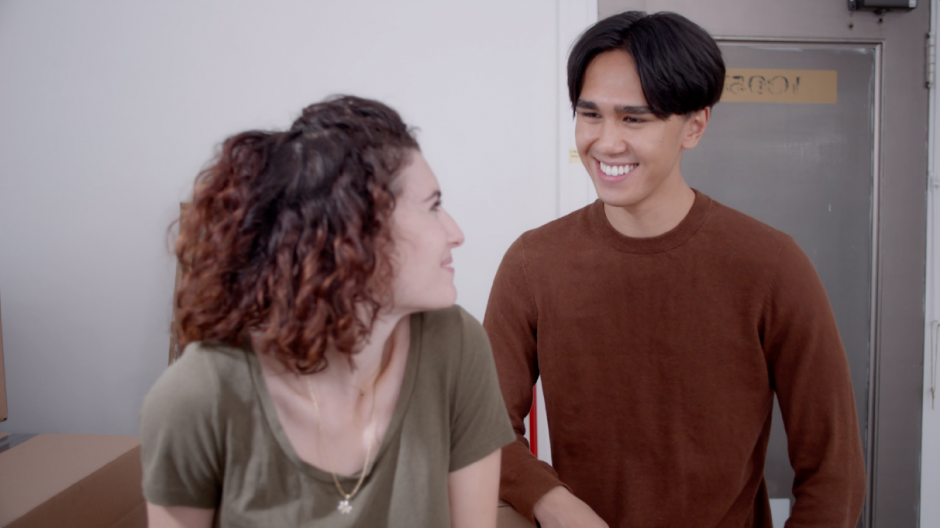
In asking probing questions about flirting using this video, you may find an interesting conversation opens up about very different expectations of what amounts to flirting. In parsing what amounts to flirting, perhaps even identifying what misunderstandings occur in the video regarding flirting, conversations about consent, boundaries, and clear communication can follow.
It is worth noting that the anti-bisexual sentiments depicted in this video can be painful for multi-gender attracted people. When using this video, it would be valuable to pause and unpack Julie’s comments, opening space for bisexual, pansexual, and other multi-gender attracted people to speak to their experiences like the one depicted between Julie and Greg.

A Different Ending
As the video resumes, we see Julie again lean in to kiss Greg, but the conversation resolves with Greg relating to Julie, saying he’s been in her situation before. Julie says she misread Greg’s signals, and he admits he can “seem kinda flirty.”
Participants may have mixed feelings about this ending, given it places the burden of explanation on Greg, the person establishing a boundary and refusing consent.
- How could we reduce this burden for Greg?
- What could Julie do or say that would allow Greg to refuse without explanation?
In this resolved ending, it may be worthwhile to talk about handling feelings of rejection.
- How do we respond to rejection, be it romantic, scholastic, professional, or other kinds of rejection?
- How do we honor the pain or embarrassment of rejection without resorting to microaggressions (as Julie did in the first segment), despair, or even violence?
- Also, what ways can we support our friends and community members who are experiencing rejection?
Topics Covered:
Communication styles, passive aggression, flirting and relationships, responding to romantic rejection, biphobia, microaggressions against queer people
Keywords:
Biphobia, microaggressions, flirting, dating, communication, rejection
Video 3: On Asking For & Giving Consent
Run time: 2:07
Pause for discussion: 1:09
Trigger warnings: Slight reference to sex
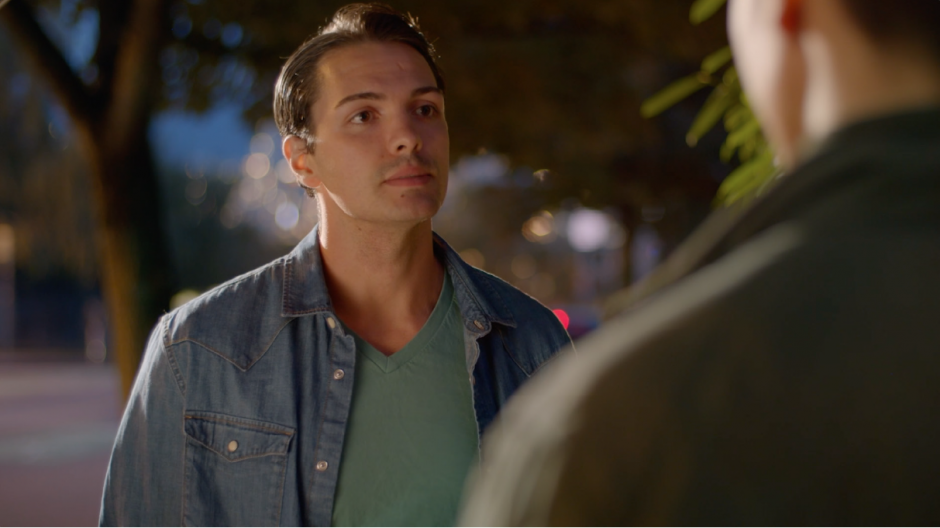
Vignette
The video opens with Greg and Brad returning from a date. They stop together in front of the gate to Greg’s home and discuss briefly how terrible the movie was they just watched. The chemistry between them is obvious, and both lean in for a kiss. Brad lets out a breath, obviously affected by it, and then suggests the night doesn’t have to end, pointing up at Greg’s place. Greg understands Brad is insinuating they could have sex, but Greg tells Brad he simply isn’t feeling up for it tonight. Brad then tries to get an explanation as to why Greg was okay having sex on their last date but not this one. Does Greg have to work early? What’s going on? But Greg simply says he doesn’t want to.
Since Brad doesn’t feel like he got a satisfactory explanation from Greg, Brad says Greg doesn’t need to bother texting him again because it’s obvious Greg isn’t that into Brad. With that, Brad storms off, and Greg is left standing confused and at a loss in front of his home.
Discussion
As the video pauses and we all take a deep breath after watching Greg and Brad’s fight, the conversation here can open to a number of topics. Consent is an obvious starting point. How do we ask for and give consent? (This can refer back to conversations you may have had with Video 1 with Janine and Erika). How do we respond to people’s consent? It may be useful to develop scripts together in terms of precise ways we can feel empowered to ask for consent, but also what amounts to clear and unequivocal consent from others.[1] This can lead to discussions on how to feel empowered being explicit in asking for/giving consent to avoid misunderstandings. It is also valuable to pause to discuss how prior consent does not equate to future consent.
Other topics this video can supplement include responding to rejection, much like the video featuring Greg and Julia (Video 2). How do we deal with our feelings of rejection so that we don’t lash out at others and can respect others’ boundary-setting? How do we think about our own values that inform our boundaries so that we can feel empowered to say “no” as Greg did? Asking participants if they would have felt safe or empowered enough to say “no” can help establish the diverse needs folks have in communicating their consent. Knowing what makes others feel safe to refuse can inform how we ensure we aren’t being coercive, too.
How could Greg and Brad communicate so that both felt validated? How can Brad adjust his communication to respect Greg’s boundary-setting? What kinds of boundaries ought the pair establish together so that conversations like this can be less heated?
[1] Personal note from the author: As a facilitator myself, I have found the exercise of providing precise phrasing for asking for/giving consent to be extremely beneficial to youth I’ve worked with, but also neurodivergent people of all ages. Establishing these conventions clearly for neurodivergent people, in my personal experience, has been crucial to developing safe and robust consent practices, especially given how vulnerable neurodivergent and disabled people generally are to sexual assault and exploitation. Having a script for these situations can significantly reduce pressure to communicate clearly.
A Different Ending
The video resumes with Greg and Brad sharing a kiss, and Brad again asks if he could “come up” to Greg’s place, insinuating they could have sex. Greg again refuses, but this time Brad doesn’t probe him, trying to find a justification for Greg’s refusal. Instead, Brad jokes “it’s because of the movie, isn’t it?” before telling Greg “it’s cool,” and Brad hopes to see him over the weekend. The pair kiss again, and Brad departs with much less fuss than before.
Conversations about consent can feel awkward, especially given how much our culture encourages us to speak in euphemisms about sex. While this is a serious topic, Brad’s response may be a way of talking about the role of humor and laughter in asking for and giving consent.
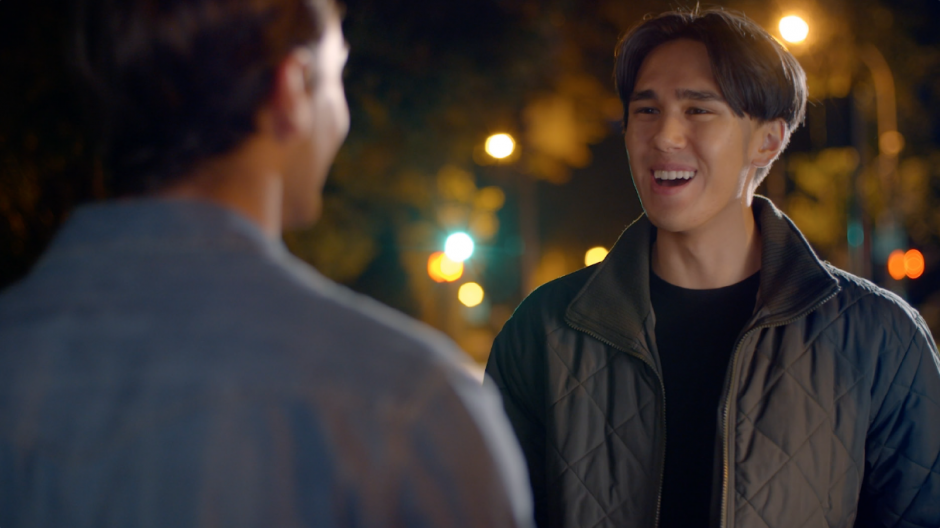
Here, you may return to any of the above conversations to see if the alternate ending resolved some of the issues participants discussed or if there are still lingering questions. Are there other scenarios participants can think of where we can practice understanding a “no” not as a personal attack but a person respecting their own boundaries and values?
Topics Covered:
Consent (sexual), responding to romantic rejection, conflict resolution, communication styles, boundary setting, personal values, sex and dating
Keywords:
Consent, sexual consent, rejection, conflict, communication, boundaries, values, sex
Video 4: Compromise
Run time: 2:10
Pause for discussion: 1:12
Trigger warnings: Racism (specifically against Indigenous people), racist stereotypes of Indigenous people, invalidation of identity (Two Spirit), microaggressions
This video is unique.
In using this video, be prepared to debunk certain myths about Two Spirit identity and Indigenous culture. If you do not have direct or lived experience here, familiarize yourself with the particulars using our helpful resources: https://www.saravyc.ubc.ca/witness2s/ .
Two Spirit identity is a unique identity that varies across Indigenous geographies, nations, and cultures, meaning the experience of Two Spiritedness is not uniform. Being Two Spirit is not synonymous with being transgender, nonbinary, queer, or other terms that appear in the 2SLGBTQIA+ acronym. It is a unique embodiment that contains an interwoven understanding of gender, sexuality, and Indigenous culture that cannot be mapped accurately in colonial terms. This does not mean, however, that Two Spirit people are not a cherished, integral part of the 2SLGBTQIA+ community. In your facilitation, it is important to feel you have a firm grasp of Two Spirit identity, culture, and issues to avoid perpetuating myths and misunderstandings that increase Two Spirit folks’ vulnerability.
Given that this is a sensitive topic and exposes Indigenous folks in the room to the misconceptions of non-Indigenous people sharing their space, a grasp of anti-racist facilitation skills is useful, too. The racism depicted in this module is not resolved or eliminated and may be triggering or painful for non-Indigenous people, too, especially Black people and people of colour. If you are white, be prepared to open space for IBPOC participants and to explicitly name the issues in this video.[1]
Given that, the materials accompanying this video are more extensive and prescriptive than other modules included here so that the vignette remains tied securely to context.
[1] The author of these modules is a white settler. This module is reviewed by our Two Spirit Indigenous Advisory Board who advises on all research and other activity SARAVYC engages in involving Indigenous people and peoples.
Vignette
Here we return to Janine and Erika’s relationship. The pair are getting ready for bed, and Janine asks if she can put on a white noise app, but Erika asks why they need it when there are sirens and other noises outside already. Janine puts the app away before bringing up the topic of next weekend’s plans. Janine suggests the pair could go to the ferry and get tacos she knows Erika loves. Erika, however, says that she can’t given she has Ceremony on Saturday. Janine asks if Erika can “get out of it,” but the event is important to Erika’s Two Spirit identity. That said, Erika has wanted to invite Janine to come along to these gatherings and extends the invitation.
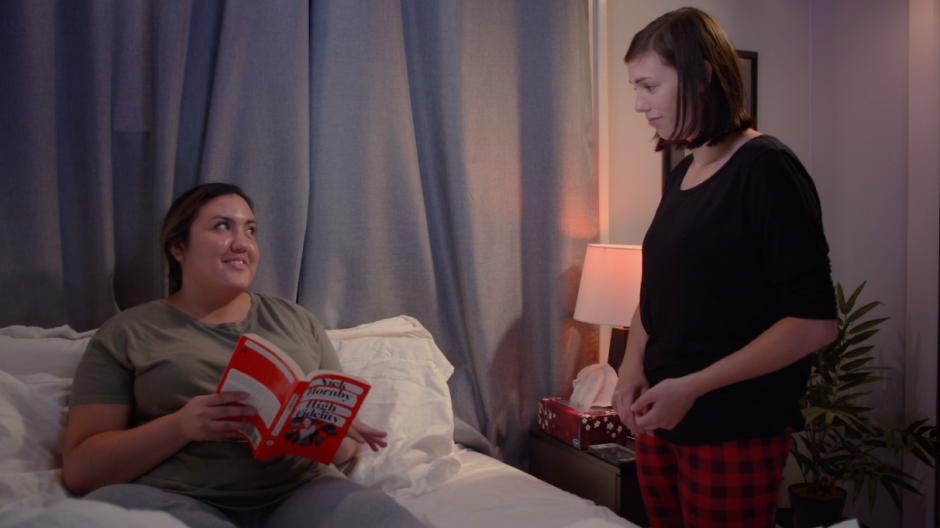
Janine responds that she’s not sure if the Ceremony is “her thing” which confuses Erika. Then Janine says, “what am I supposed to do? Put on a headdress and dance around a fire?” which, of course, is deeply offensive to Erika and Erika’s culture. Erika says, “Is that what you think of my culture?” and then suggests Janine sleep on the couch with her white noise app.
Discussion
At the pause, this video is likely to bring up many topics of discussion. Hopefully, some of what went wrong is apparent, but it is worth working through moment by moment. Important touchpoints here include (in order):
- When Janine asks to make plans on Saturday, Erika says she has Ceremony. We can assume here, given they are in a romantic relationship, Janine is aware Erika is Indigenous and Two Spirit, but Janine assumes their plans for Saturday should take priority.
- We can recognize our own desires (i.e. to get tacos at the ferry on Saturday) without diminishing the importance of our partners, friends, and community members’ identities. What adjustment could Janine make here from the beginning that might avoid deepening the harm caused as the conversation progresses?
- Then, when Erika invites Janine to accompany her to Ceremony, Janine is hesitant (which can be understandable!) but comes across as diminishing or demeaning the event.
- Here, there is a level of nervousness that may be understandable. When we engage with the cultures of our romantic partners that are not like our own, many of us are deeply invested in doing it “right.” Perhaps, if we are giving Janine the benefit of the doubt, this could inform her reaction, but even so, how could Janine express this without diminishing the meaningfulness of Ceremony for Erika and her community?
- Unfortunately, we can’t always assume good intentions. There may be underlying myths and misconceptions informing Janine’s reaction. This may be an opportune moment to raise those and debunk them.
- Next comes what may be the most obvious instance of racism in this vignette. Janine asks, “What am I supposed to do? Put on a headdress and dance around a fire?” Erika is (justifiably) upset about the comment.
- Many topics may come up here, including but not limited to cultural appropriation, racist stereotypes, and the way humor or joking can be harmful in relationships.
- Be aware that exercises that involve listing racist stereotypes or jokes and forms of cultural appropriation may be harmful for IBPOC participants as they re-expose racialized persons to these harms.
Discussions may turn to the appropriateness of Erika’s reaction to Janine. We recommend avoiding critiquing Erika’s response, given she has just been subjected to racism.
- The American Philosophical Association has a good blog on “tone policing” that explains how trying to control (typically oppressed) people’s reactions is a way of re-establishing oppressive control. https://blog.apaonline.org/2022/05/10/tone-policing-and-the-assertion-of-authority/
- It may even be worthwhile to note explicitly that Erika is, in fact, entitled to her reaction given what she has just experienced from Janine. As Audre Lorde wrote in her 1981 essay “The Uses of Anger,” “Anger is an appropriate reaction to racist attitudes, as is fury when the actions arising from those attitudes do not change.”
A Different Ending
The ending of this video depicts a better ending, but not a truly satisfactory one. Be prepared to leave time after completing the video to discuss how this scenario can be improved upon.
The scenario resumes with Erika inviting Janine again, which Janine again hesitates to accept. This time, however, she explains Ceremony is something she “hasn’t really been exposed to” where she might be uncomfortable. Erika then says she understands, offering to walk Janine through what would occur at Ceremony, who agrees.
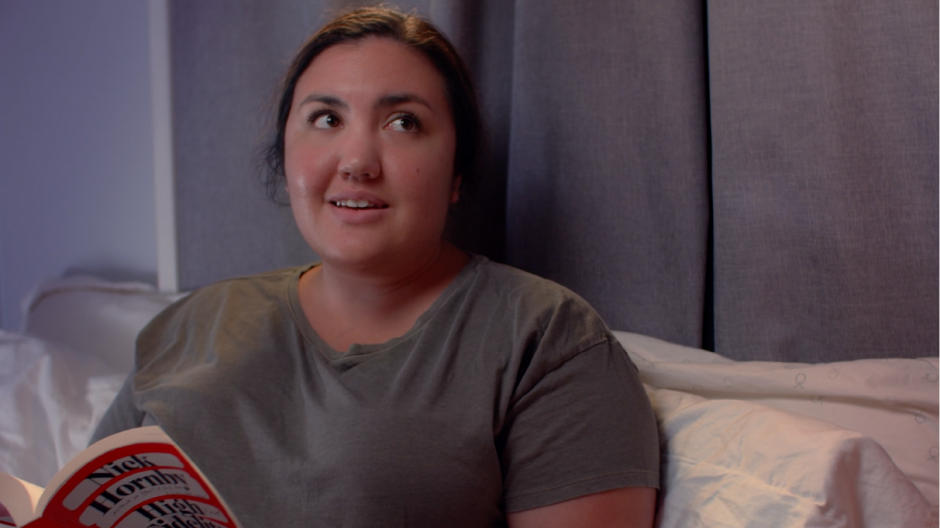
If this were a scenario that involved simply choosing between similar weekend plans (instead of a pleasure outing vs. an important cultural event), we could applaud Erika and Janine’s ability to compromise and respect each other’s social anxiety. Given that is not the case, however, and the pair are choosing between an outing for tacos and Erika’s important cultural experience, compromise here is entangled in privilege and power Janine has in their relationship. Generally speaking, requiring extra labour of marginalized or oppressed people to explain the importance of their culture, politics, or other practices is another way privileged folks avoid doing deeper work to tackle their prejudice.
Here, we may understand Erika’s offer to explain Ceremony both as a genuine desire to share her culture with her partner and an example of the disproportionate labour marginalized people perform in their intimate relationships. Erika has likely had to learn a great deal about Janine’s culture given the colonial circumstances Indigenous people live under today.[1] Janine, however, as a white settler, likely only had to learn snippets about Indigenous people with little to no focus on Erika’s (unnamed) people specifically. This alternate ending allows for important discussions about power in relationships and vital anti-racist skill building.
Some questions that can guide your discussion here include:
- What can Janine do as a white settler to affirm Erika?
- Where could Janine look for more information about Two Spirit identity, Erika’s people, and Indigenous culture?
- If we thought perhaps Janine had social anxiety and struggled with new and unknown situations, what are some ways to communicate that to Erika without diminishing Erika’s needs and values? How do we establish boundaries when we hold (social, political, or economic) privilege over our partners?
For more on anti-racism in relationships, see the following research:
- https://www.beaconbroadside.com/broadside/2019/05/committing-to-antiracist-love-in-interracial-intimacy.html
- https://www-journals-uchicago-edu.eu1.proxy.openathens.net/doi/full/10.1086/682749#d4626297e722
- https://www.google.com/url?sa=t&rct=j&q=&esrc=s&source=web&cd=&cad=rja&uact=8&ved=2ahUKEwiIm8KZjtL8AhVzHDQIHe9sA0gQFnoECBsQAQ&url=https%3A%2F%2Facademic.oup.com%2Fbook%2F2641&usg=AOvVaw1OJaUtZx29B89jpbAuthvb
- https://mashable.com/article/mixed-race-experience-book
[1] These vignettes were filmed in so-called Vancouver where vastly diverse Indigenous peoples live under the colonial authority of British Columbia and Canada. These videos largely rely on the North American context of Indigeneity.
Topics Covered:
Racism in intimate relationships, microaggressions, compromise, anti-racism, interracial relationships, anti-Indigenous racism, Two Spirit identity and culture
Keywords:
Indigenous, Two Spirit, racism, microaggressions, compromise
Video 5: Privacy
Run time: 2:48
Pause for discussion: 1:50
Trigger warnings: Invasion of privacy, conflict
Vignette
We are once again with Brad and Greg who are trying to find something to watch on TV. As Brad suggests titles, Greg’s phone continues to buzz with texts from “this guy Jeff, from work.” Brad asks about it after Greg laughs at a few texts before returning to scrolling. Greg gets another text, but his phone does not recognize his face, so he inputs his passcode. Brad leans over Greg’s shoulder to watch him input his passcode, memorizing it. Afterward, Greg says he is going to use the washroom, leaving his phone behind. Brad decides to check Greg’s phone, inputting the passcode, but Greg returns to the room having forgotten something to find Brad scrolling or “snooping” through is phone. This angers Greg who asks if Brad was going through his text messages. The vignette ends with Greg grabbing his phone back, visibly upset, and Brad at a loss for words.
Discussion
Brad has invaded Greg’s privacy in going through his phone. This, however, is an often unspoken boundary in social situations and relationships.
- What unspoken boundaries do people have that we can anticipate when interacting with others?
- Why is going through someone’s phone such a serious thing?
- Are there boundaries that we do not need to explicitly state but should assume and respect automatically with others?
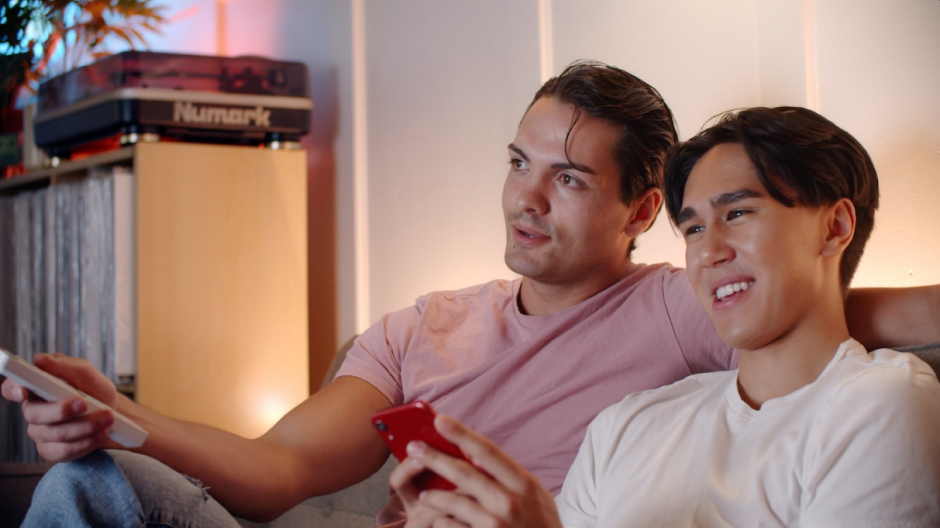
The discussion can also turn to why browsing someone’s direct messages, texts, or private social media without consent is problematic.
- What expectations does such lack of privacy set up in relationships?
- Why is it important to have privacy in romantic relationships?
- What is the difference between secrecy and privacy?
- What kind of intimacy can we ask of one another in relationships?
- Is “snooping” every appropriate?
- What does the desire to “snoop” reveal about our feelings for a person?
- What can we do instead of snooping?
There may also be an opportunity to discuss quality time, the use of our phones, and the role social technology plays in our intimate relationships.
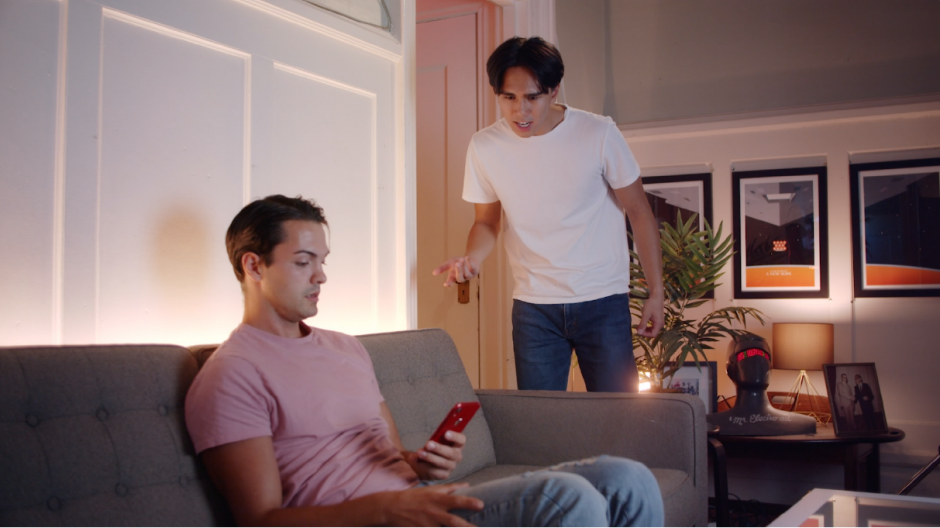
A Different Ending
The alternate ending is short and sweet because both Brad and Greg make different decisions. Brad, after Greg has gotten a few messages from “Jeff from work,” asks Greg to put his phone away so they can spend time “just the two of us.” Greg agrees, apologizing for being distracted, and puts his phone away. This time when Greg gets up to use the washroom, leaving his phone behind, Brad does not snoop. The video closes with Brad sighing, saying, “He really needs to get Disney+.”
Topics Covered:
Privacy, social technology, quality time, snooping, boundary setting, unspoken boundaries and social norms in relationships
Keywords:
Privacy, text messages, dating, relationships, boundaries, snooping
Video 6: Confrontation
Run time: 1:13
Trigger warnings: biphobia, abusive language, manipulation
Vignette
This video features only one vignette with no alternate ending. We return to Julia and Greg as Greg FaceTimes Julia, obviously upset. When Julia picks up, Greg confronts her about sending Brad (his presumed partner) direct messages and texts encouraging Brad to break up with Greg. Julia denies it, but then a screenshot appears on the screen showing Julia’s texts to Brad. The messages contain several accusations that Greg is “scamming” Brad. The messages continue, accusing Greg of not being “even really gay” (which he isn’t—Greg is bisexual), leading Brad on to make Julia jealous, and perpetuating stereotypes of bisexual people as simply “confused.”
Julia continues to deny the messages are real, accusing Brad of using photoshop to alter or create the screenshot. While Julia never admits to sending the messages, Greg tells her that if she is going to act this way, they cannot be friends. With that, Julia and Greg both hang up.
If you wish to return to the screenshotted messages, they appear at 00:41.
Discussion
This video may be triggering and difficult for participants. Manipulation like this is something that happens often in relationships and can be difficult to recognize and respond to. The video, however, can be used to empower participants to set boundaries and to refuse to engage with certain people in their lives. While sometimes this may feel drastic, especially when we feel overwhelmed with the possible social consequences, removing people from our lives can be a healthy thing that gives us freedom to enjoy our lives.
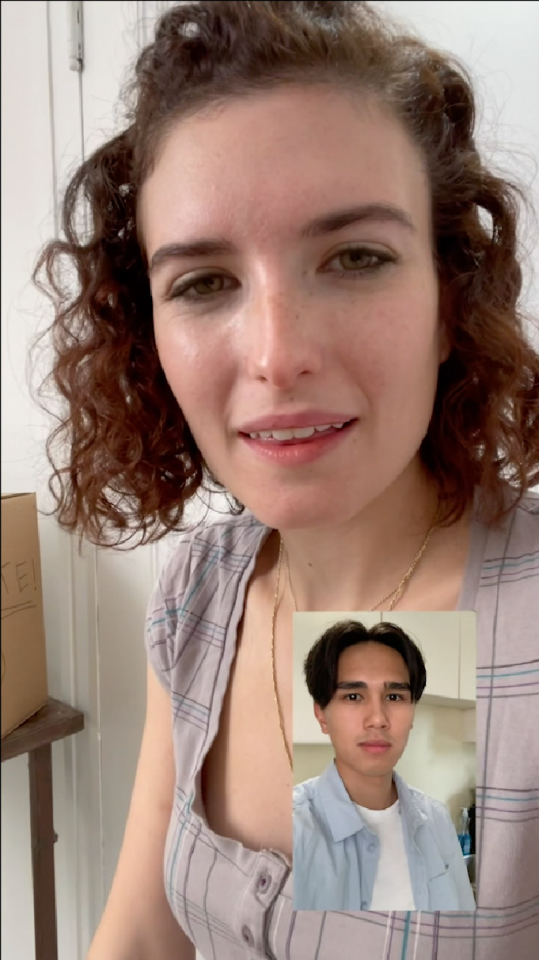
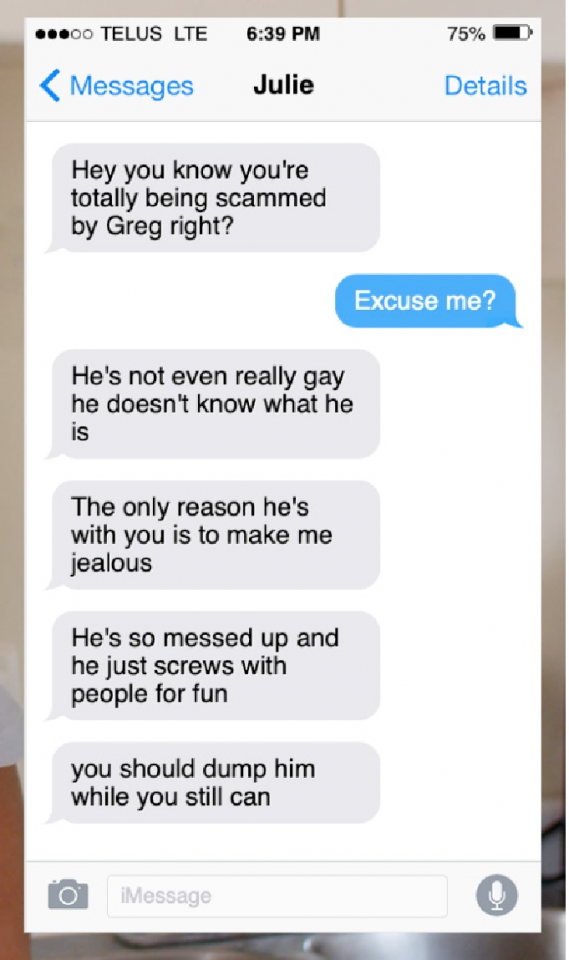
Difficult decisions like this can be intimidating, but Greg offers a script of how to set a boundary. It may be useful to ask participants to brainstorm what they would say if they needed to cut someone out of their lives. Discuss how social pressure and stigma might keep us from making decisions that benefit us like this.
- What can we do to support people who make these difficult decisions?
- How could Brad, perhaps, be there for Greg after this?
It may be useful, too, to discuss how we could respond when we are called out or in for our own wrongdoing.
- What does apology look like?
- How can we respect a person’s boundary and work to better ourselves?
- How do we take care of ourselves as we try to grow from our mistakes?
- What are we pressured into doing that do not reflect our values?
- How can we stick to those values?
Topics Covered:
Biphobia, emotional manipulation, relationship interference and jealousy, boundary setting and conflict, harassment
Keywords:
Boundaries, harassment, conflict, biphobia, discrimination, jealousy
Credits & Copyright
Actors
Anthony Curtis as Greg
Sarah Latham as Erika
Brittania McCauley as Janine
Sydney Powers as Julia
Wyatt Sterling as Brad
Shooting & Production
Christopher Young, VLY Films
Scriptwriter
Stephanie Hall
Module author
Hannah Sullivan Facknitz
Review
Elizabeth Saewyc, Ph.D., RN, FSAHM, FCAHS, FAAN
Monica Rana, Ph.D.
Video 4:
SARAVYC Indigenous Two-Spirit Advisory
Copyright
SARAVYC content is licensed under the Creative Commons license Attribution-NonCommercial-NoDerivatives 4.0 International (CC BY-NC-ND 4.0). To read the specifics of this license, visit Creative Commons.
Stock photos used on this page are courtesy of Kamaji Ogino, Ketut Subiyanto, Pavel Danilyuk, Rodnae Productions, Uriel Mont, Darina Belonogova, and Polina Tankilevitch via Pexels. They are not included in the CC BY-NC-ND 4.0 license of SARAVYC material and operate under the Pexels license.

